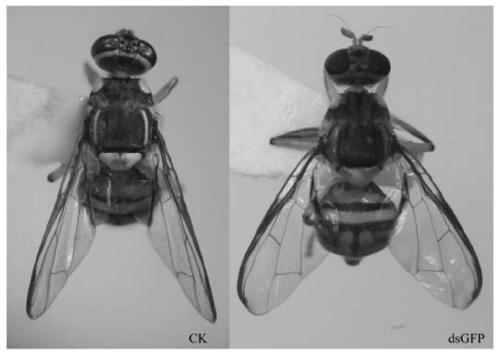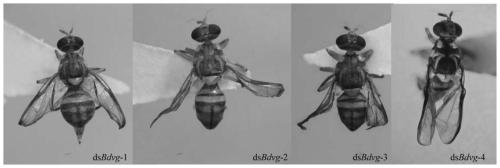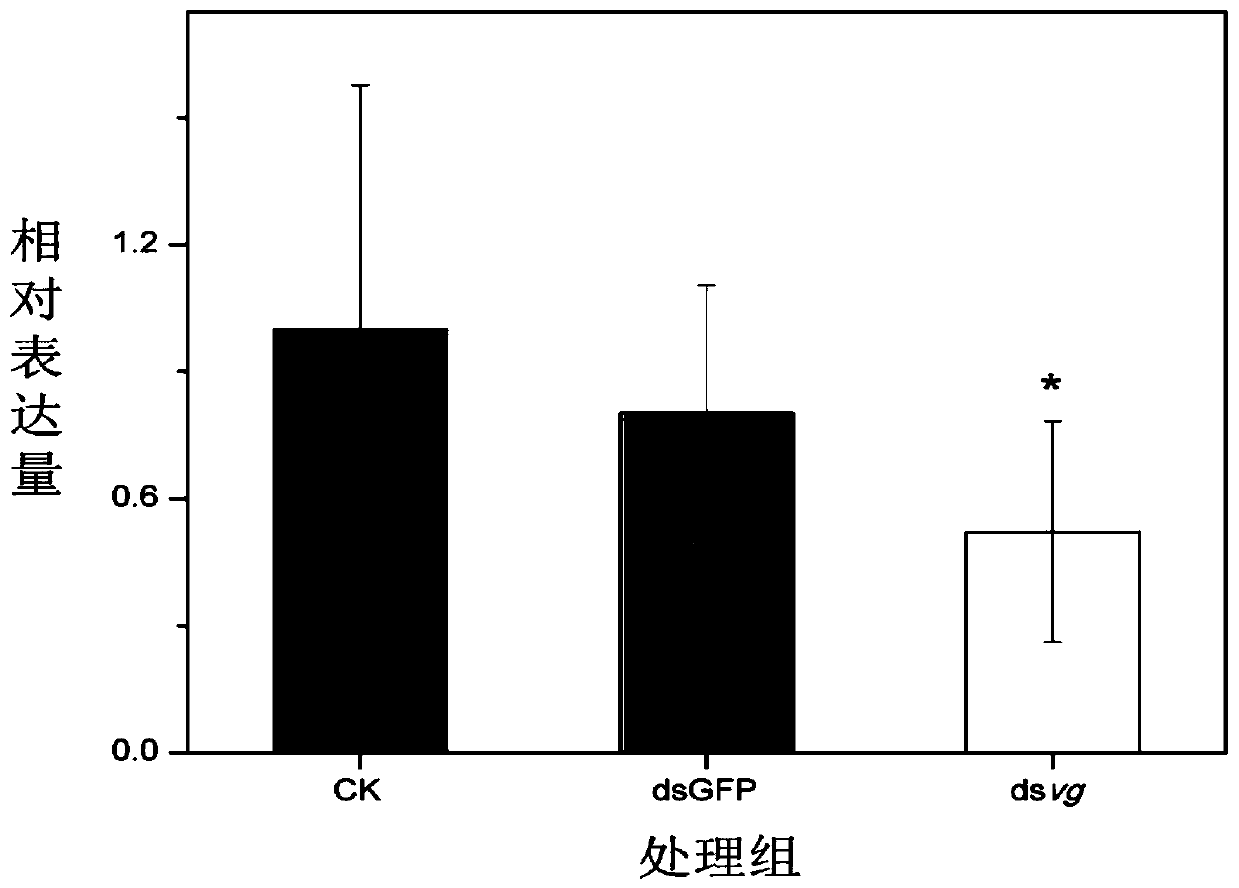dsRNA of vestigial gene related to wing development and its application in the control of Bactrocera dorsalis
A technology of Bactrocera dorsalis and genes, applied in the fields of biotechnology and agricultural pest control, can solve problems such as limitations, and achieve the effects of preventing and controlling invasion and spread, ecological security and human health
- Summary
- Abstract
- Description
- Claims
- Application Information
AI Technical Summary
Problems solved by technology
Method used
Image
Examples
Embodiment 1
[0052] Example 1. Obtaining dsRNA of genes related to wing development
[0053] 1. Samples of Bactrocera dorsalis for testing
[0054]The insect source Bactrocera dorsalis used in this experiment is the indoor population of the Plant Quarantine and Invasion Biology Laboratory of China Agricultural University. The indoor breeding conditions: the temperature is 25°C; the relative humidity is kept at about 70%; D). The breeding method of Bactrocera dorsalis is as follows: Bactrocera dorsalis is reared uniformly in the insect cage, the larval feed (the formula of larval feed is as shown in Table 1) is added to 500ml distilled water, boiled and bottled for subsequent use, and it is frozen after cooling Feed for adults (the feed for adults is obtained by mixing sucrose and soybean peptone in a mass ratio of 1:3) and feed the adults after adding water and moistening. After eating the feed, the larvae mature and pupate in the soil, and about ten days later they emerge as adults, and...
Embodiment 2
[0159] Example 2, the application of the dsRNA of the wing development-related gene vg in the control of Bactrocera dorsalis
[0160] 1. Feeding dsRNA
[0161] The 1st instar healthy and normally developing Bactrocera dorsalis larvae were selected as experimental materials. The experiment was set up with blank control group, dsGFP (irrelevant gene) control group and treatment group. Each group had three replicates, with 40 larvae in each replicate.
[0162] 1. Blank control group (CK)
[0163] Take 20 1.5ml centrifuge tubes, add about 0.15g crushed B. dorsalis larvae feed and 4 μ lddH to each centrifuge tube 2 O, mix well. Two larvae were placed in each centrifuge tube for feeding. The feeding and growth of larvae were observed daily. After 48 hours, the feed was taken completely, and then only the feed was supplemented until the larvae grew to the end of the third instar. One of the surviving larvae in the centrifuge tube was picked into the soil to pupate and emerge, an...
PUM
 Login to View More
Login to View More Abstract
Description
Claims
Application Information
 Login to View More
Login to View More - R&D
- Intellectual Property
- Life Sciences
- Materials
- Tech Scout
- Unparalleled Data Quality
- Higher Quality Content
- 60% Fewer Hallucinations
Browse by: Latest US Patents, China's latest patents, Technical Efficacy Thesaurus, Application Domain, Technology Topic, Popular Technical Reports.
© 2025 PatSnap. All rights reserved.Legal|Privacy policy|Modern Slavery Act Transparency Statement|Sitemap|About US| Contact US: help@patsnap.com



